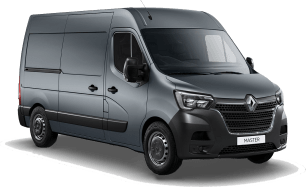First things first, the IM5 Performance is supercar fast. This 2.3-tonne five-seater blazes from 0-100km/h 3.2 seconds and with its dual motors combining to produce 572kW/802Nm, eye-widening performance always resides underneath your right foot.
But it’s not all about straight line speed. Ride comfort is excellent. Underpinned by an all-new platform, the IM5’s suspension is by double wishbones at the front and multi-links at the rear. But the key to its bump and rut smoothing ability is air suspension and ‘continuous control’ active damping.
Fold in double-glazing on the full-length glass roof and side windows, as well as active noise cancellation and you have a serene interior environment at any speed. Also worth noting the front seats are great; as grippy as they are comfortable.
Not only that, despite its relative heft, this mid-sizer steers well, too. Not the last word in road feel but it points accurately and the standard rear steering helps with prompt (but never jerky) cornering turn-in. Flick to ‘Sport’ mode and the IM5 is up for some enthusiastic running.
The rear wheels can turn up to 12 degrees in the opposite direction to the fronts at slow speed, which makes for a usefully tight 10-metre turning circle. But above that, at lesser angles, it adds extra stability and decisiveness in the way the car steers through even tight, twisty sections.
Rubber is top-shelf Pirelli P Zeros on 20-inch alloys (245/40 fr - 275/35 rr) and it grips hard, especially in the wet weather over much of the test period. Braking is solid, as it needs to be, with ventilated discs all around and four-piston callipers at the front.
No adjustable regen braking but you can feel the ‘Cooperative Regenerative Brake System’ (CRBS) doing its thing when you lift off the accelerator.
The physical rear view is modest thanks to the slope of the back window reducing its functional area for the driver to that of a 1950s VW Beetle. Even the interior rear-view mirror is tiny and folds up into a recess in the headliner if you’d prefer life without it.
But that’s where a rear camera view popping up on the upper screen display (accessed via the right-hand steering wheel click control) comes in handy. Side camera views are also available as is a 360-degree overhead view, which makes parking straightforward.
If you need more parking help there are various self-parking modes including a nifty ‘Curbside’ function that will realign the car hands-free if you’re parallel parked too far out from the kerb.
In a similar vein, a ‘Rainy Night’ mode projects left and right rear views onto the main screen using AI to enhance clarity and highlight pedestrians and cars.
Overall the ADAS (Advanced Driver Assistance Systems) are relatively unobtrusive but we found ourselves switching off the incessant overspeed chime that sounds for 10 seconds if you creep over the indicated speed limit, even when the system has misfired on the correct speed. For example, 40km/h school zones on a Sunday.
The over-zealous driver distraction warning also occasionally issued a visual and audible slap on the wrist when I was looking straight ahead. Tellingly, there’s a specific quick screen for turning both these functions off, but it kinda defeats the purpose of having them in the first place.
We also found the adaptive cruise control to be hesitant in multi-lane environments, reducing speed occasionally because the system seemingly believed a car was set to merge, when it wasn’t.





.png)
